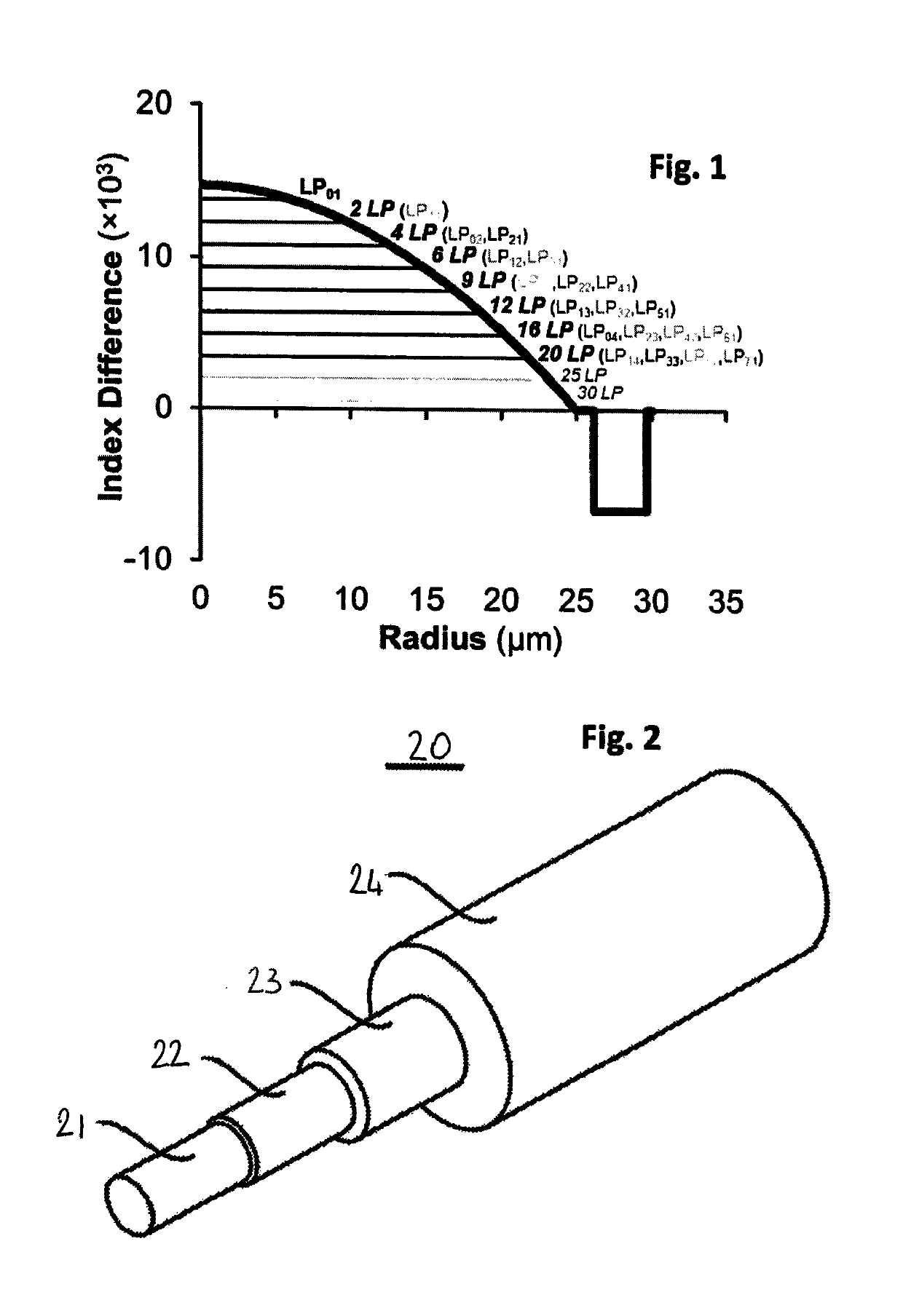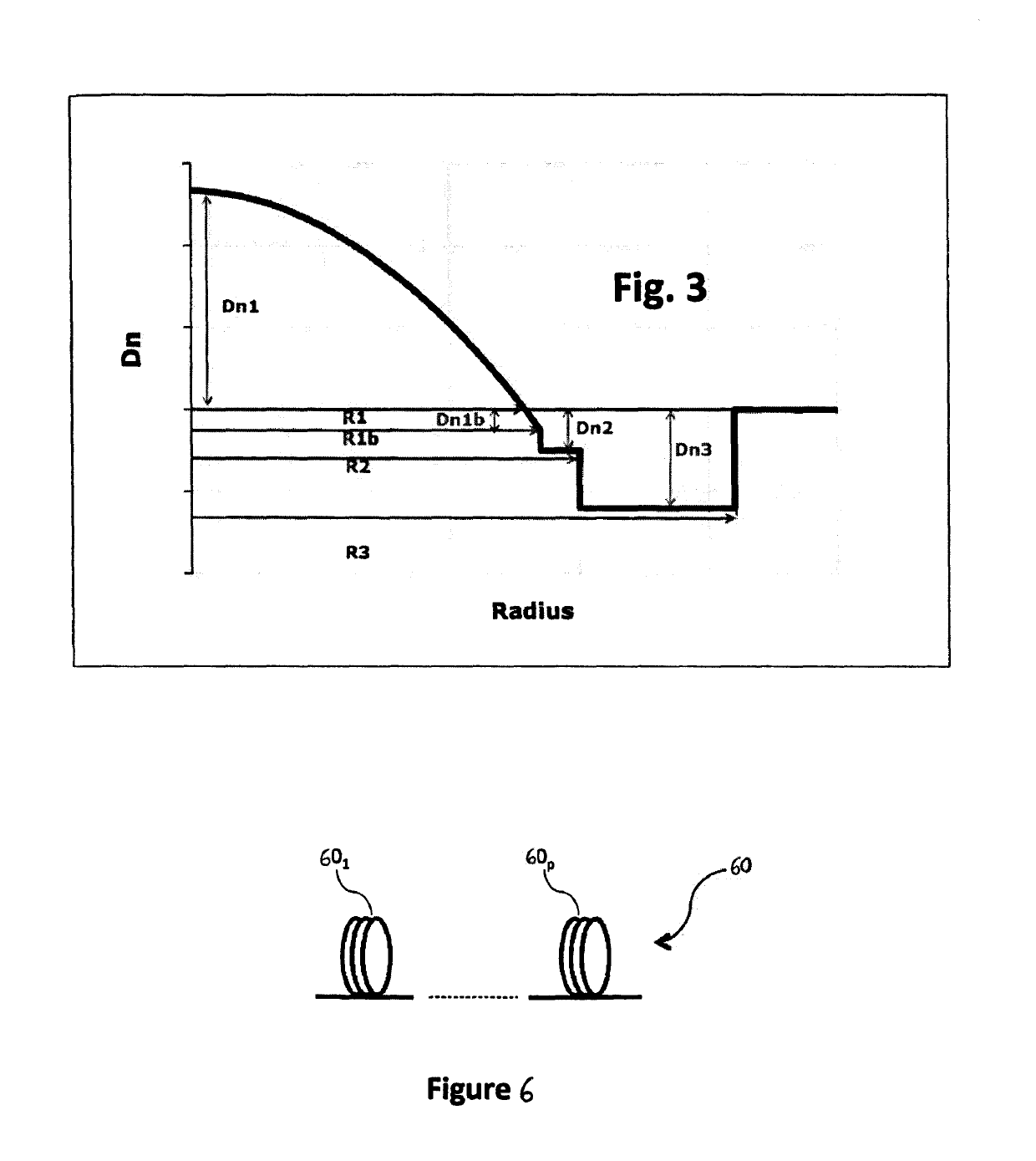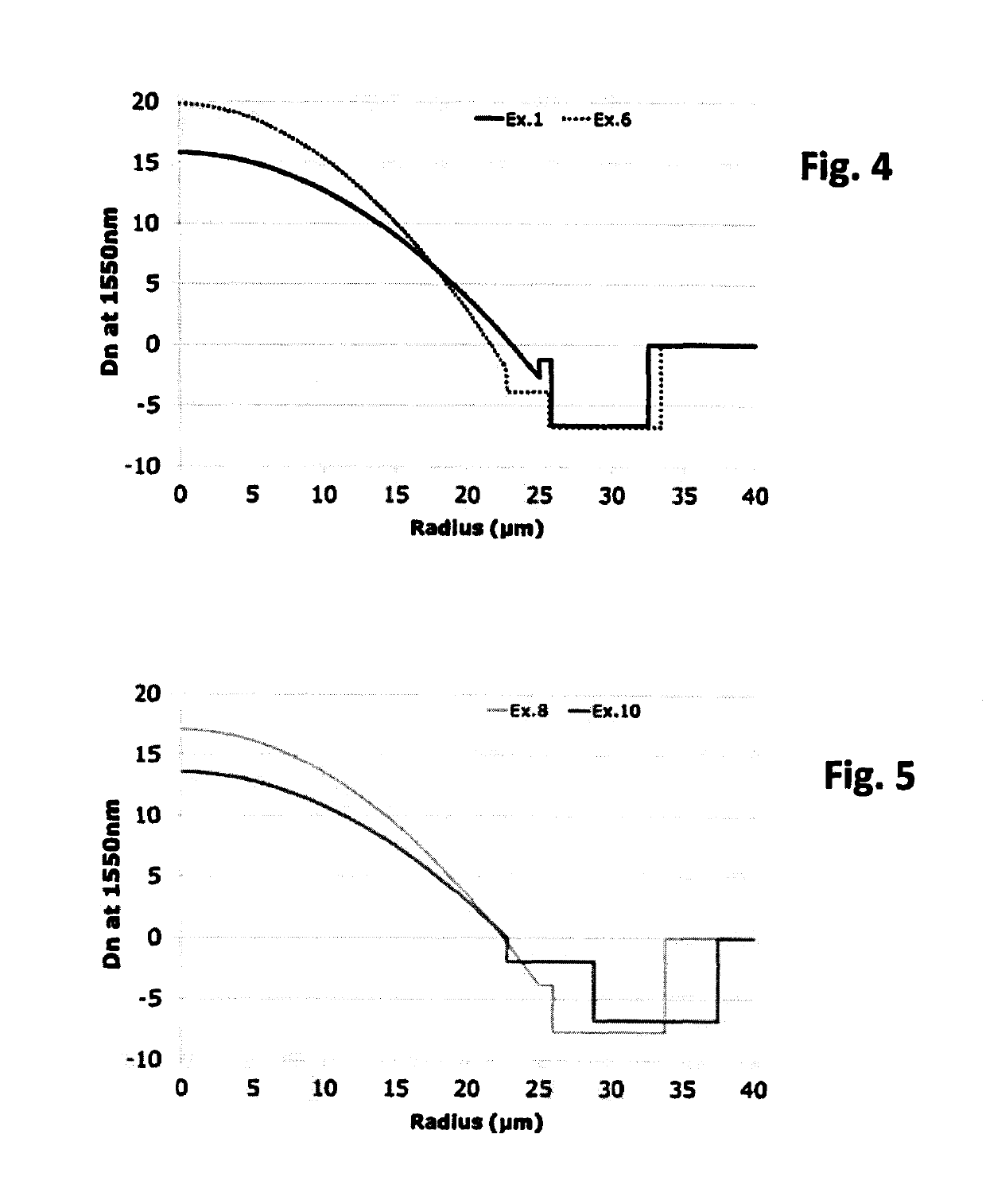Few mode optical fibers for mode division multiplexing having intermediate trenches
a technology of fiber optics and fiber optic fibers, applied in the field of fiber optic transmission, can solve the problems of major limitations on fiber transmission capacity, single-mode fibers suffer from nonlinearity problems, and the optimization of fiber modes becomes more and more difficult, so as to improve the confinement of optical modes, reduce the loss of macrobending, and improve the effect of properties
- Summary
- Abstract
- Description
- Claims
- Application Information
AI Technical Summary
Benefits of technology
Problems solved by technology
Method used
Image
Examples
examples ex.1
[0140]Examples Ex. 1 to Ex. 4, Ex. 7 and Ex. 10 correspond to FMFs supporting 25 LP guided modes, while examples Ex. 5, Ex. 6, Ex. 8, Ex. 9, Ex. 11 and Ex. 12 correspond to FMFs supporting 30 LP guided modes.
[0141]Examples Ex. 10 to Ex. 12 correspond to a peculiar embodiment where R1=R1b, and the minimal refractive index of the optical core 21 is equal to the refractive index nCl of the outer cladding 24.
[0142]Examples Ex. 7 to Ex. 9 correspond to another peculiar embodiment, where Dn2=Dn1b, i.e. the refractive index of the intermediate trench 22 is equal to the minimal refractive index of the core 21.
[0143]Moreover, examples Ex. 1 to Ex. 6 and Ex. 10 to Ex. 12 correspond to a specific design of the interface between the core and the cladding, which is such that |Dn1b−Dn2|≥0.5×10−3, and Min(Dn1b, Dn2)≥−1.5×10−3.
examples ex.7
[0144]Examples Ex. 7 to Ex. 9 correspond to another specific design of the interface between the core and the cladding, which is such that |Dn1b−Dn2|−3 and Dn2 is between −5×10−3 and −3.5×10−3.
[0145]FIG. 4 graphically provides the refractive index profile of two exemplary FMF optical fibers, corresponding to examples Ex. 1 and Ex. 6 in Table 1. The refractive index difference Dn shown on the y-axis is measured at 1550 nm, and the radius of the FMF fiber shown on the x-axis is expressed in μm.
[0146]The refractive index difference of the FMF of example Ex. 6 is shown in dashed lines. The graded-index core 21 shows a α-profile with α=1.93, a radius R1=21.6 μm at 0 refractive index difference and a maximum refractive index difference Dn1=19.8×10−3 at 1550 nm. The α-profile ends at R1b=22.7 μm, with index difference Dn1b=−1.9×10−3.
[0147]An intermediate trench 22 is down-doped as compared to the optical core 21 and shows a refractive index difference with the outer cladding 24 Dn2=−3.9×10...
first embodiment
[0191] in FIG. 7A, such an optical system comprises transceivers 71 and receivers 75 optically connected by an optical fiber link 60 that includes at least one span of fiber. Transceivers 71 comprise light sources (such as lasers) and generate n LP modes, referenced 1, 2, . . . , n used in the optical system of FIG. 7A. A mode multiplexer 72 multiplexes the n LP modes and is optically connected to optical link 60, which guides the n multiplexed LP modes, towards a mode demultiplexer 73, which is optically connected to the end of optical link 60.
[0192]Mode demultiplexer 73 demultiplexes the n multiplexed LP modes, and feeds each LP mode into an amplifier 74. At the output of amplifiers 74, LP modes enter receivers 75.
[0193]Such an optical system may comprise M optical links (or M spans of optical fibers). In an example, M=1; in another example, M=2; in another example M=5; in yet another example, M=10. In case the optical system comprises M optical links or spans, it also comprises M...
PUM
 Login to View More
Login to View More Abstract
Description
Claims
Application Information
 Login to View More
Login to View More - R&D
- Intellectual Property
- Life Sciences
- Materials
- Tech Scout
- Unparalleled Data Quality
- Higher Quality Content
- 60% Fewer Hallucinations
Browse by: Latest US Patents, China's latest patents, Technical Efficacy Thesaurus, Application Domain, Technology Topic, Popular Technical Reports.
© 2025 PatSnap. All rights reserved.Legal|Privacy policy|Modern Slavery Act Transparency Statement|Sitemap|About US| Contact US: help@patsnap.com



